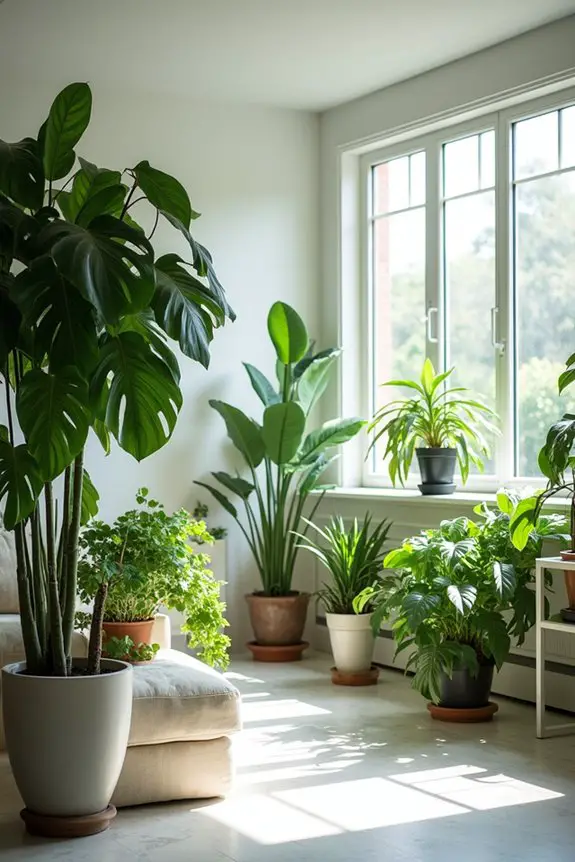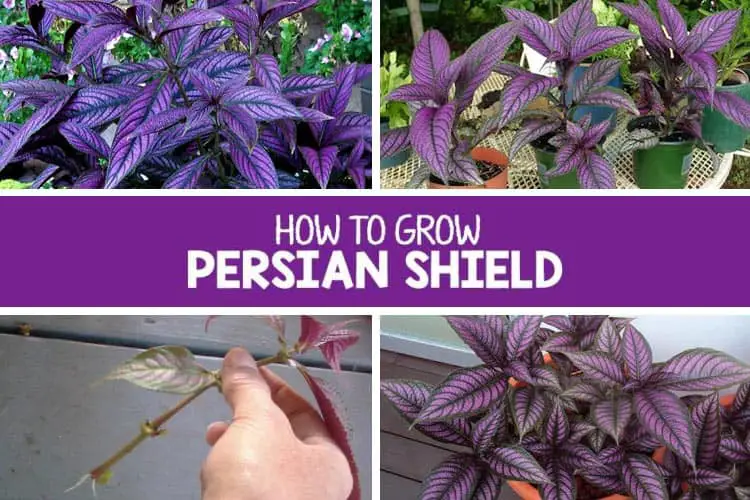How To Propagate Cacti And Succulent Plants : A Complete Guide
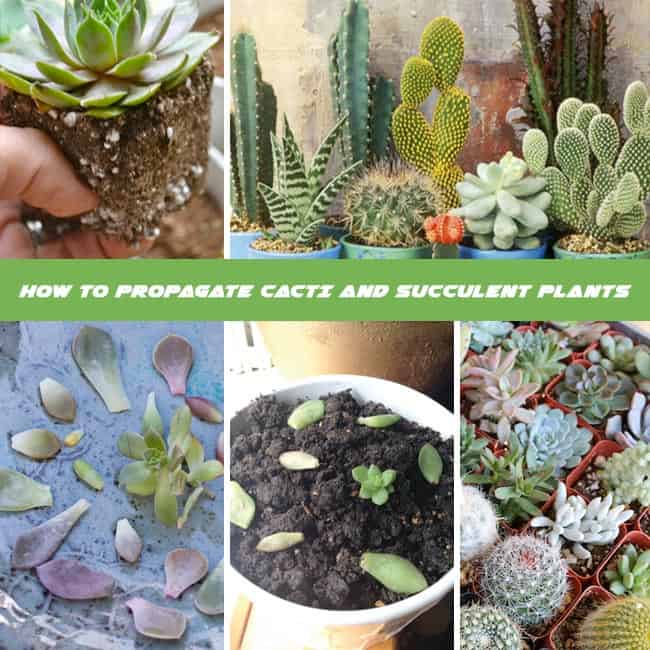
Learning how to propagate cacti and succulent plants is easy. In fact, most of these plants are easy to propagate. Furthermore, they have plenty of leaves that will allow you to try out a huge batch at once with only less effort. It is even possible to propagate the succulents out of a single leaf. However, there are some species that will require proper cutting of the stem. Here are the steps to propagating cacti and succulents.
Start at the Growing Season
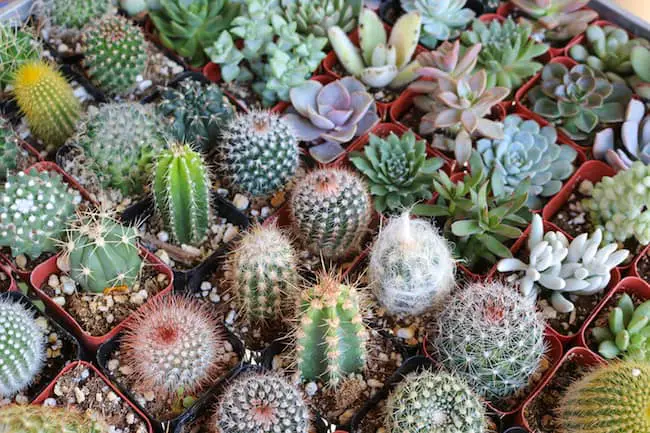
Image Credit: The Succulent Source
You can start propagating at any time of the year. However, you will have more success if you will begin planting at the end of the dormant period of the plant or at the beginning of the growing season. Usually, this will mean during the early spring although there are some succulent species that can be grown in winter or autumn. If you’ve got a succulent cutting already, then you can begin planting the cutting. If not, then you should follow the next step.
Sterilize Your Garden Knife

Image Credit: hosstools
Use a sharp knife that’s capable of cutting a straight cut into the plant. Minimize the risk of infection by sterilizing the knife. You can heat the knife under an open flame or by wiping it with alcohol.
The use of pruning shears is not recommended since they will cause jagged or crushed tears, which the leaf won’t be able to heal from. If you will not pluck the leaf, then ensure that the entire leaf will snap off the stem. Use gentle tug when snapping off and never apply excessive force.
Individual Leaves or Larger Cutting
Next, decide whether you will cut individual succulent leaves or go for a larger cutting. Most of the succulents could grow new plants from either an individual leaf or from a stem segment. However, there are some species like the Dudleya or Aeonium that will require the use of stem segments.
If you are not sure what species or genus your cacti or succulent plant is, you can try any method. The mother plant will not likely suffer if you will follow the proper steps on how to propagate succulent plants. For some unusual species, taking off the newly grown pup might best propagate the plant.
Also Read: How to Grow Succulents Indoors Easily
Choose a Leaf To Cut
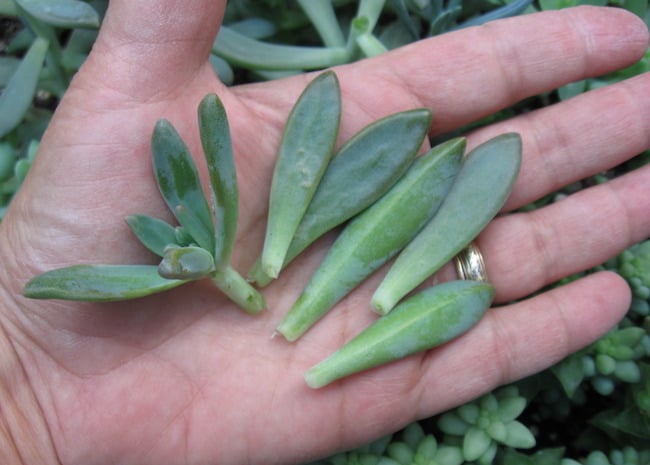
Image Credit: My Urban Farmscape
If the type of succulent that you want to grow has the rosette look of tightly rounded leaves above the stem, then leave it untouched. Instead, cut the leaves from the lower down, but not directly cut at the base. For those types of succulents that will mostly grow outward instead of upward, chop the leaves from their outer edge. Cut the leaves on that area where they connect to the stem. Maintain a straight cut when cutting. Except if you are also taking stem cuttings, then skip ahead into the section of planting the cutting.
Choose a Stem To Cut
Propagating succulents is not really that difficult. However, you can still increase your chance of having a healthy plant by ensuring proper cutting. You must ideally choose a stem that grows actively near the outer edge or top of the plant and should be about four to six inches long.
Cut beneath the stem joint directly or right beneath the area where the leaf or the bud will join with the stem. Choose the piece that has at least two leaves or some clusters of leaves.
Strip the Leaves from the Lowest Part
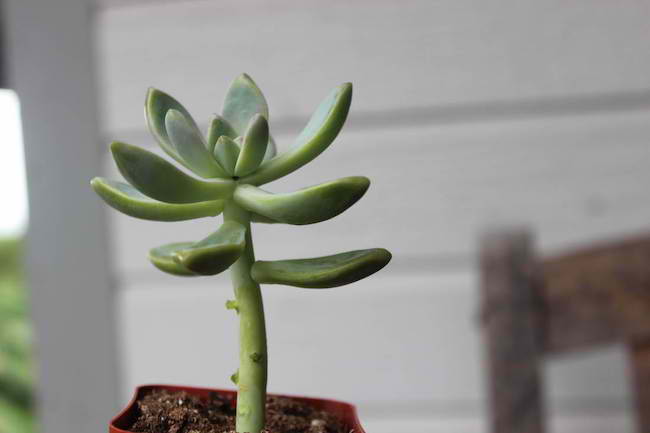
Image Credit: Succulents-plantswithapower
If you will follow the stem cutting in propagating cacti, take off the lowest cluster of the leaves. Strip them using the sterilized knife and leave the lowest part of the stem bare. Never remove any remaining leaves higher up on the stem. If the buds are in your cutting, then just leave them on.
Dip the End of Cutting In a Rooting Hormone
This step on how to propagate cacti is pretty optional. There are commercial rooting hormones that can help to hasten the development of your succulent cutting. You may want to consider using them. The product consists of an anti-fungal agent and helps to prevent rotting as well. This method of treatment is highly recommended for older woody stem cuttings. However, it is not really necessary.
Some experts report a huge success in using cinnamon as a much cheaper alternative to rooting hormones. For this method, simply sprinkle ground cinnamon at the cut end.
Also Read: 7 Best Grow Lights For Succulents
Let the Cuttings Dry
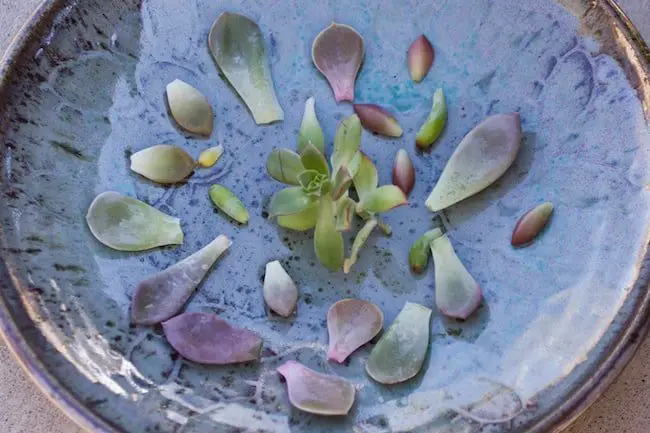
Image Credit: Cassidy Tuttle
Place the cuttings in a paper towel to dry, far from direct sunlight. Make sure to check the cut ends regularly. They should dry out in order to make the plant to be less susceptible to rotting.
The stem cuttings can be planted after a day or two of drying. The leaf cuttings could undergo more visible change and will grow a callous out of a cut surface. This should take anywhere until seven days.
If the leaves will shrivel at this time, you might need to plant the cuttings early. This will have a low rate of success. However, the leaves could die if they are left to dry out completely.
Prepare the Succulent Potting Mix
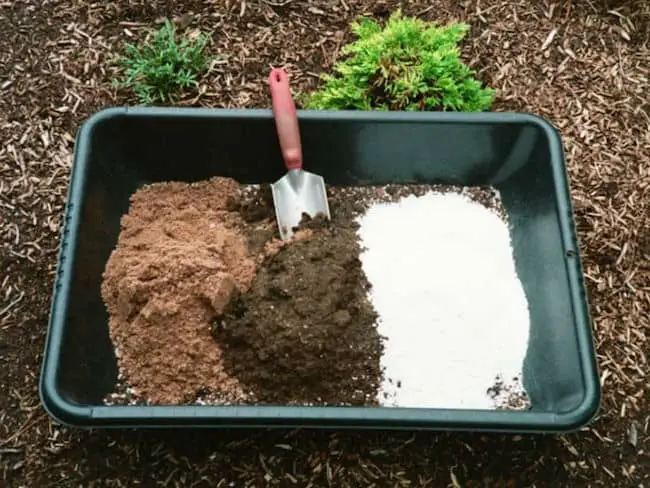
Image Credit: Pinterest
While the cuttings are being left to dry, fill a container with cacti or succulent potting mix. If you want to prepare your own, consider mixing together about three parts of the potting soil, one part perlite, and two parts sand.
If possible, use salt-free and coarse sand because hand-gathered sand contains salts and microorganisms that might harm the plants.
Choose the Right Size of Pot for your Cutting
Cacti and succulent plants would thrive well in pots that are not too big. Therefore, make sure to choose a pot that is not too big for your plant. Those pots that will allow for about two inches of growing room are ideal. Moreover, they should have drainage holes for the excess water to drain.
Plant the Cutting
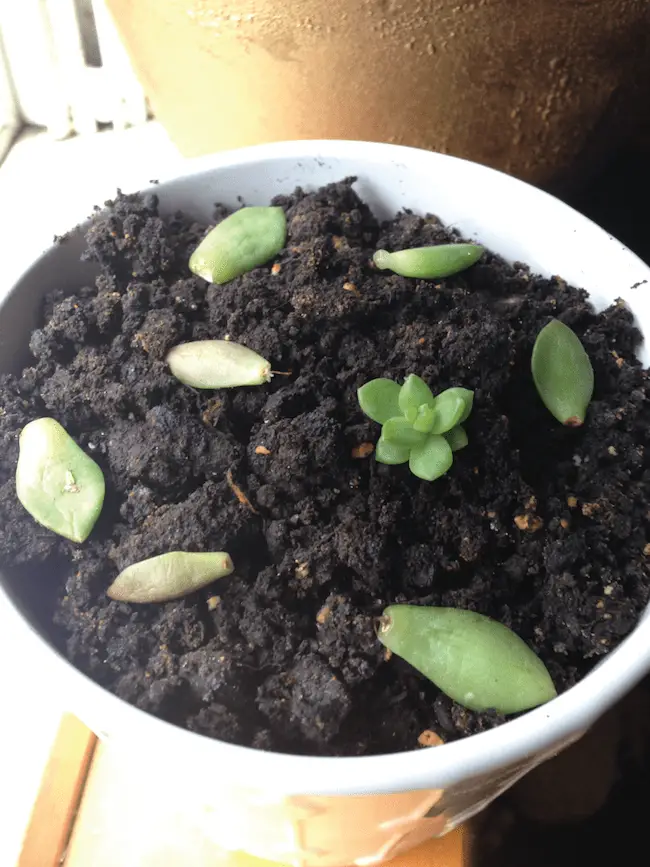
Image Credit: Heavens to Betsy
Stem cuttings can be possibly planted as usual, where you need to bury the stem until such time that the lowest leaves will be just above the soil. However, it must not be touching the soil. Buried leaves will be more likely to rot. Thus, if you’ll use the leaf cutting to propagate succulent plants, simply touch the cut end into the soil surface and then prop the leaves up with pebbles.
Place the Plant In a Warm and Airy Location
Young cacti and succulent plants might not have enough water to withstand direct sunlight, unlike adult plants. They will work best under indirect sunlight and in areas having temperatures of about 68ºF. It can also work well in locations that have good air circulation.
Always Keep the Soil Moist
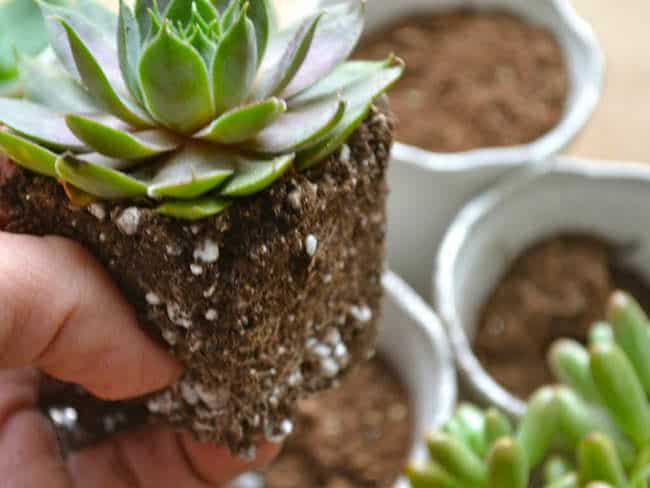
Image Credit: World of Succulents
Your succulents will require enough water to stay alive and in order to develop roots. However, the succulents are usually adapted to dry climates and they will end up rotting if left in a soaking condition.
Use a spray bottle or a smaller sized pitcher for adding water above the soil as soon as the plant dries out. Mist the leaf cuttings directly well since it has not developed roots just yet.
If the tap water in your area is heavily chlorinated or if the cuttings have developed rotting, consider using distilled water.
Reduce Watering When the Plant Starts To Develop
The stem cutting might not have enough roof system after four weeks. At this point, you might water as infrequently every month. The leaf cuttings could develop more slowly, however, the eye can also track it as small leaves and roots coming from the cut end. Consider reducing the watering gradually as soon as the roots will start to enter the soil, which will usually take about six weeks or longer.
Use Fertilizer the Right Way
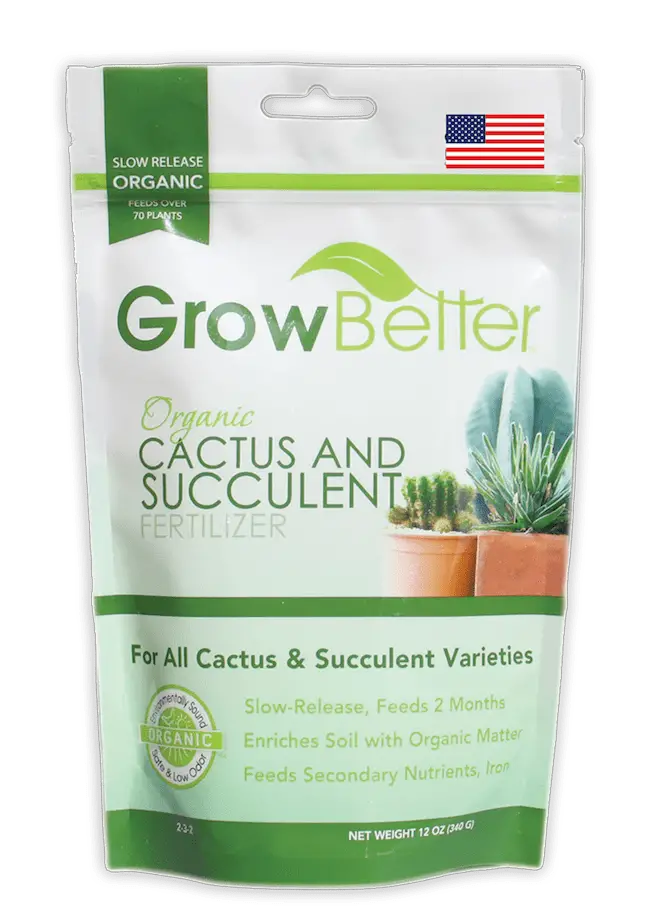
Image Credit: Jongs Organic Fertilizers
Cacti and succulents are considered slow growing plants and will not adapt with high nutrient soil. Therefore, if you use fertilizer in propagating succulents, make sure to use a balanced fertilizer. Apply it only during the growing season and apply once if the young plant is about four weeks old and has established some roots. Consider a fertilizer that has a recommended dosage of ½ or ¼ in order to prevent the succulents from becoming very leggy or tall.
Also Read: How to Water Indoor Plants
More Tips on How To Propagate Cacti
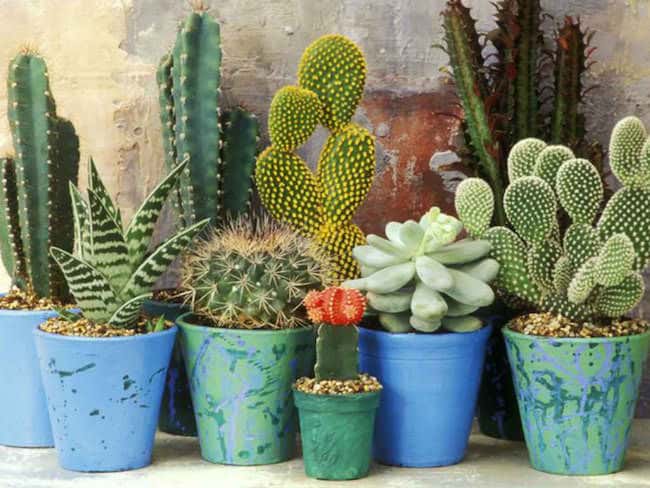
Image Credit: World of Succulents
In general, cacti and succulent plants need to be treated with utmost care and watered more often at the start. However, the soil must still remain dry in between watering. There might be a bit of trial and error when growing the plants, depending on the temperature in your house. A home that’s drier due to the air conditioning system could mean that you may need to water the plants more frequently.
Final Thoughts
Sure, the steps on how to propagate cacti might require lots of effort and time, but once they start growing, you will realize that all your efforts are actually worth it.


